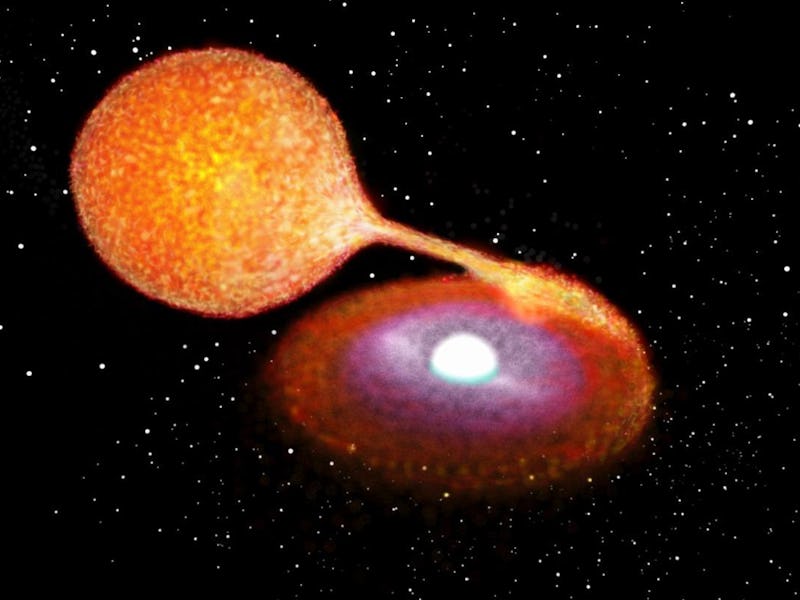This Strange, Beautiful White Dwarf Might be Last Gasp of a Supernova
Half-star, half-zombie.

Stars don’t die softly. When it’s finally time for those massive balls of energy and heat to expire, they go out in a stupendous explosion. But just as there are different kinds of stars, there are different kinds of supernovas.
An international group of astronomers, in findings published in the latest issue of Science, have now identified a white dwarf star in the Milky Way that could actually be the remnants of a newly discovered type of supernova. That understanding itself could be critical in granting scientists a clearer view of how the universe operates.
That white dwarf, named LP 40-365, is screeching through the galaxy at a very high speed. Scientists so far know that it possesses a very strange concoction of elements — or rather, lack thereof. LP 40-365 doesn’t have carbon, helium, or hydrogen. Its unusual properties seem to be the consequence of an equally unusual supernova known as Type la supernova. While these particular explosions are common enough in the universe, they are still not well understood by astronomers.
If this white dwarf really is the last hurrah of a Type la supernova blast from about five to 50 million years ago, it could be critical in answering some big questions in cosmology. Some astronomers believe Type la supernovae can be used to study dark energy and the expansion of the universe.
The thing is, Type la supernovae aren’t necessarily supposed to create stars. Scientists believe LP 40-365 might actually be the consequence of a related for of supernovae: Type Iax. These are basically the same as the Type Ia, but are much fainter, and result from the partial destruction of white dwarf stars.
That could explain what LP 40-365 is, but it’s going to take many more observations to really get to the bottom of the mystery. If the white dwarf really is a partial zombie of cosmic gas and dust, we can probably expect to find many others like it in our galaxy.